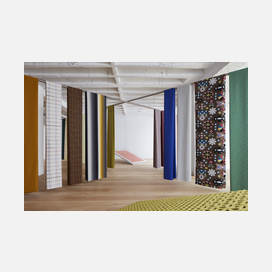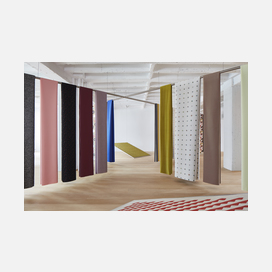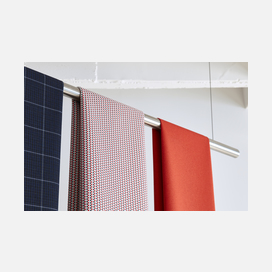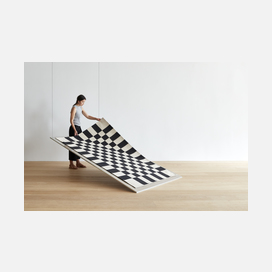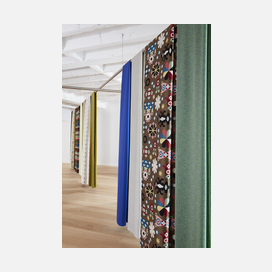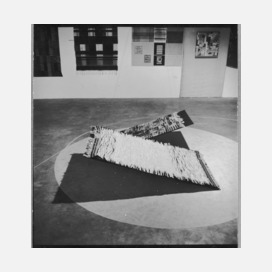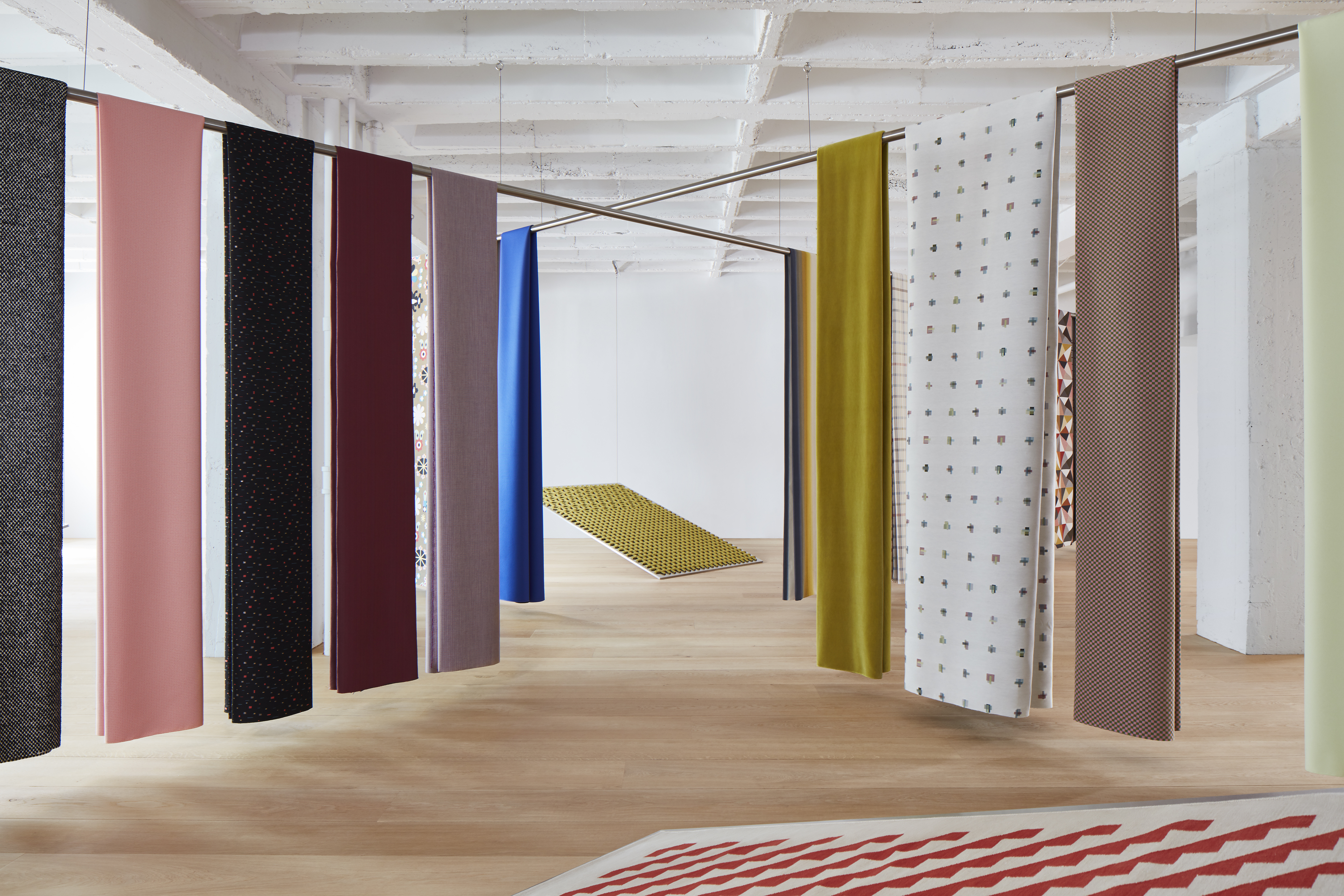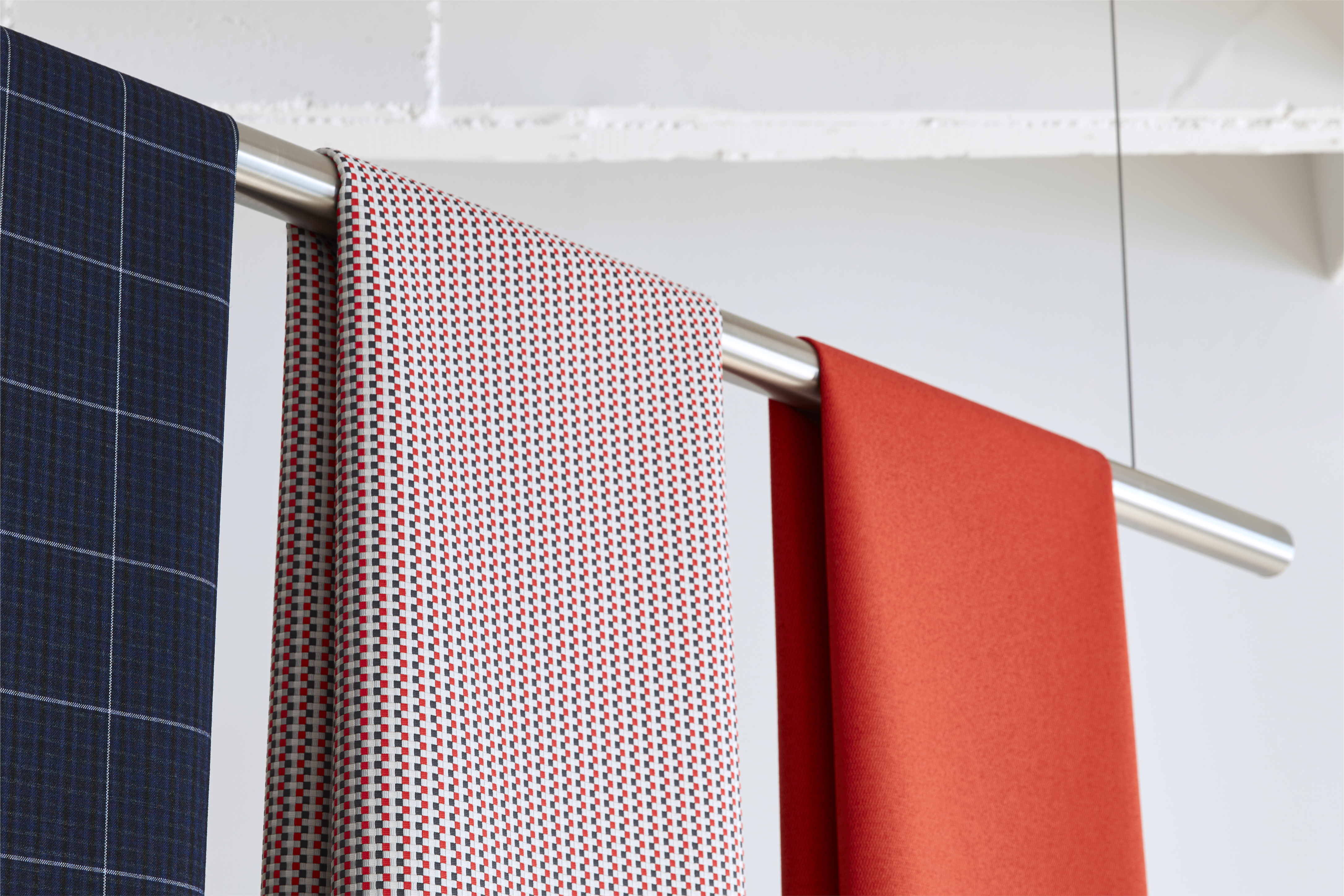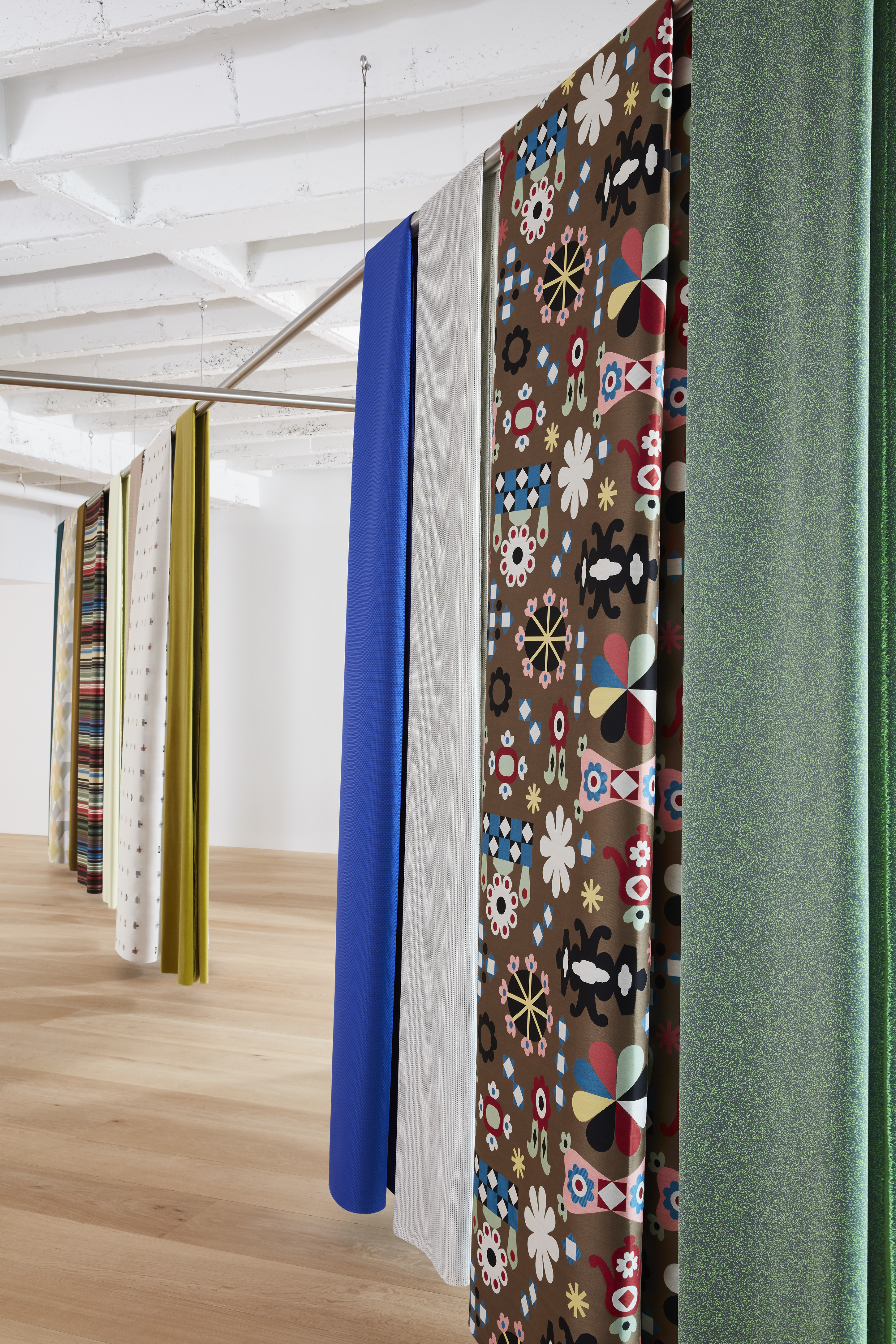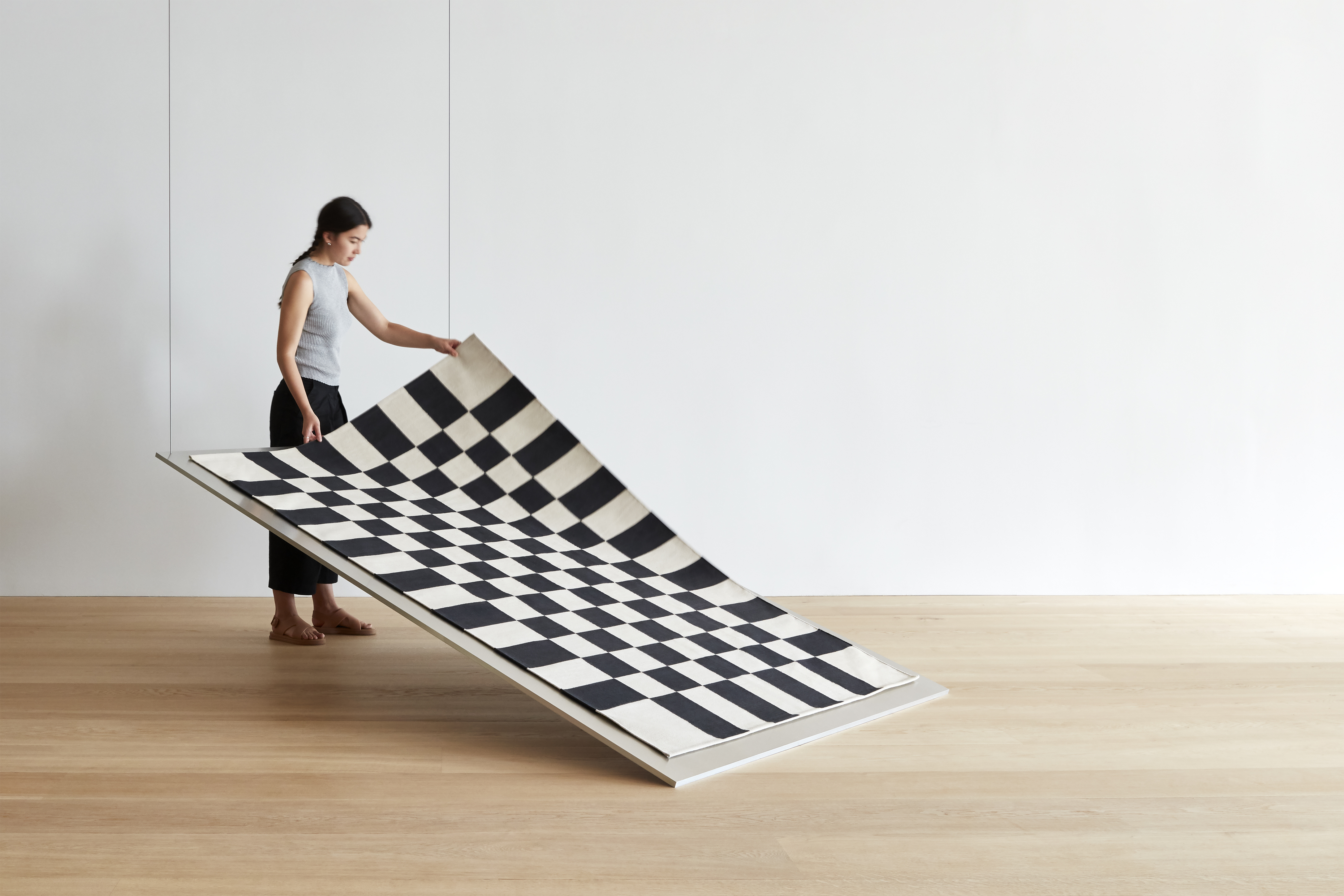For NeoCon 2018, Maharam presents a new installation in collaboration with the American industrial designer, Leon Ransmeier. This marks the third consecutive year of creative cooperation between Ransmeier and the Maharam Design Studio.
Each year, Maharam transforms its Chicago showroom into an open gallery space in which a minimum of product can be shown to its best advantage. This year’s installation delivers visual impact at an architectural scale while utilizing only the simplest elements possible: lines and planes.
Instead of ping-ponging proposals as in years past, this year, the Maharam Design Studio and Ransmeier Inc. arrived at a concept jointly using a scale model of the showroom. The resulting installation features two perpendicular, 45'-long, stainless-steel bars suspended in an x-formation across the width of the showroom. Rather than intersect, the bars are positioned at slightly different heights, roughly 9' overhead, suggesting two infinite lines floating in space.
Building on the concealed, expanding mechanism of last year’s structure, Ransmeier Inc. devised a straight variant that joins the 9'-long modules into a continuous, 45'-long whole. They also engineered a cable system that avoids boring through to the undersides of the bars, thus giving a seamless impression when viewed from below. The showroom’s coffered ceiling presented yet another consideration: the network of joists and beams limits the drilling locations and cable positions, requiring built-in flexibility. In the end, an elegant solution of multiple overhead, keyhole-like slots delivers both inconspicuous attachment and maximum versatility in an installation that is ultimately compact, readily disassembled, and easily reconfigured.
A restrained material vocabulary of metal elements, white walls, and white oak floors provides a pristine platform for the 17.5'-long textile panels that serve as partitions, manipulating the architecture and dividing the space. The central nexus is left open, giving visitors an entry point from which to begin a meandering, personalized journey through the installation. Geometry is the focus at all scales, with bold patterns by Alexander Girard, Hella Jongerius, Sonnhild Kestler, Scholten & Baijings, and Paul Smith—as well as small-scale textures by Lisa Scull and Kvadrat collaborators Ronan and Erwan Bouroullec, Doshi Levien, and Giulio Ridolfo—united by the work of the Maharam Design Studio through all four quadrants.
Three inclined metal plinths partially encircle the installation. Elevated at one end by slender .125" cables, the 5' x 7' plinths offer the illusion of weightless suspension. Ransmeier was inspired by Herbert Bayer’s levitating plinths, used to display textiles at Bauhaus: 1919–1928, an exhibition held at the Museum of Modern Art in 1938. According to the attendant press release, “The entire installation will exemplify […] the Bauhaus principles of exhibition technique in which clarity and arresting arrangement are combined.”
Ransmeier’s industrialized version of Bayer’s idea was achieved by encasing a lightweight honeycomb layer between thin sheets of pristine aluminum. Resting atop the plinths are three re-editions of designs produced by Alexander Girard for La Fonda del Sol and Georg Jensen, now available for the first time as cotton dhurrie rugs in a scrupulous reissue executed by the Maharam Design Studio in partnership with Girard Studio.
About Leon Ransmeier
Leon Ransmeier is an American industrial designer. A graduate of the Rhode Island School of Design, he founded his New York-based studio, Ransmeier Inc, in 2010. He’s since designed furniture and interior products for clients including Arita 2016/, HAY, Herman Miller, and Mattiazzi. This is his third project with Maharam. A forthcoming backpack and suite of accessories will join Maharam’s continuing series of utilitarian bags designed by Konstantin Grcic and Jasper Morrison, among others, this spring.
